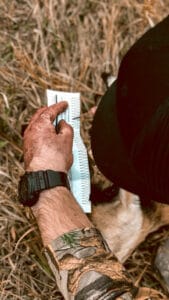Please note, this is an overview of the Wyoming license draws, not comprehensive information. There is no substitute for reading the rules and regulations published by WGFD at wgfd.wyo.gov/Hunting/Application-Process. This overview is not endorsed by the Wyoming Game and Fish Department
APPLICATIONS FOR THE 2022 SEASON OPEN 1/3/2022
Did you receive a license refund from Wyoming Game and Fish Department this year? Yeah, us too. Sometimes the sting of returned tag fees hitting bank accounts comes from the luck of the draw evading applicants (find a home for your refund here). Other times, coming up empty can be the result of confusion in the license (also referred here as tags) application process.
It can be hard to understand how big game licenses are allocated in Wyoming. With the Leftover List available and leftover draw applications upon us, there are still opportunities to grab big game hunting licenses in Wyoming. Heck, you may just want to pick up a couple extra doe/fawn or cow/calf licenses.
Either way, here’s how the Wyoming tag draws works for full-price deer and antelope and how you can still find additional opportunities for hunting next fall.
Before the season, the Wyoming Game and Fish Commission approves tag allocations for every limited quota opportunity. Then, those opportunities are divided into resident and nonresident pools. For antelope and deer, residents receive 80% of the tag allocation in the initial draw, nonresidents are given 20% of the tags.
Step 1: First Choice Resident Draw
Each applicant’s first choice is distributed in a random draw. No second choices are looked at until after every applicant’s first choice is considered.
Step 2: Second Choice Resident Draw

If there are limited quota tags left in the resident pool after all applicants receive their first choice then those applicants with it as a 2nd choice are drawn. If there are still licenses available in the full price draw, licenses are awarded to the applicant’s third choice. The process is repeated for the remaining choices as long as there are tags available in the resident pool. Any remaining unissued resident tags are then added to the original nonresident allocation. This is how nonresidents may end up with more limited quota tags than the 20% allocation.
Step 3: Nonresident Draw
The entire nonresident pool is distributed 60% to the regular draw, and 40% to the special (more expensive) draw. For example, the Special draw mule deer license costs $662.00 while the same Regular draw mule deer license costs $374.00. The difference in pricing usually results in better draw odds for the applicants in the Special draw.
In each nonresident draw, 75% of tags are distributed based on preference point levels and first choice only. 25% of licenses are randomly distributed to all applicants who did not draw their first choice in the preference points draw.
Licenses are awarded to all first-choice applicants, then if licenses are available, to second-choice applicants, and finally third-choice applicants. Preference points are not considered in the random draw.
Step 4: Second Passes
Residents are drawn randomly for any licenses remaining after the nonresident draws. These are licenses that are undersubscribed by nonresidents, so residents automatically are given a second chance at them. If there are still any licenses leftover after the resident second pass, WGFD does a second pass for nonresident special random and then nonresident regular applicants.
Step 5: Leftover Draw
If there are any remaining unwanted tags from all resident and nonresident draws, they are added to the Leftover License Draw. Many of these tags have difficult public access and/or are doe/fawn or cow/calf tags. This is a random draw with residents and non-residents in the same pool. No preference points are considered. There are no application fees for the leftover draw.
You can find the Leftover License list here.
After the leftover draw, any remaining licenses are available for purchase over-the-counter at a license selling agent or wgfd.wyo.gov
Tentative 2022 Application Schedule
Nonresident Dates:
Elk Application Deadline: January 31, 2022
Elk Expected Draw Results: May 20, 2022
Antelope, Deer Application Deadline: June 1, 2022
Antelope, Deer Expected Draw Results: June 17, 2022
Resident Dates:
Antelope, Elk, Deer Application Deadline: June 1, 2022
Antelope, Elk, Deer Expected Draw Results: June 17, 2022
Other Dates:
Sheep, Moose, and Mountain Goat Application Deadline: March 1, 2022
Sheep, Moose, and Mountain Goat Expected Draw Results: May 6, 2022
Bison Application Deadline: March 31, 2022
Bison Expected Draw Results: May 6, 2022
Leftover Draw Dates: June 22-26, 2022
